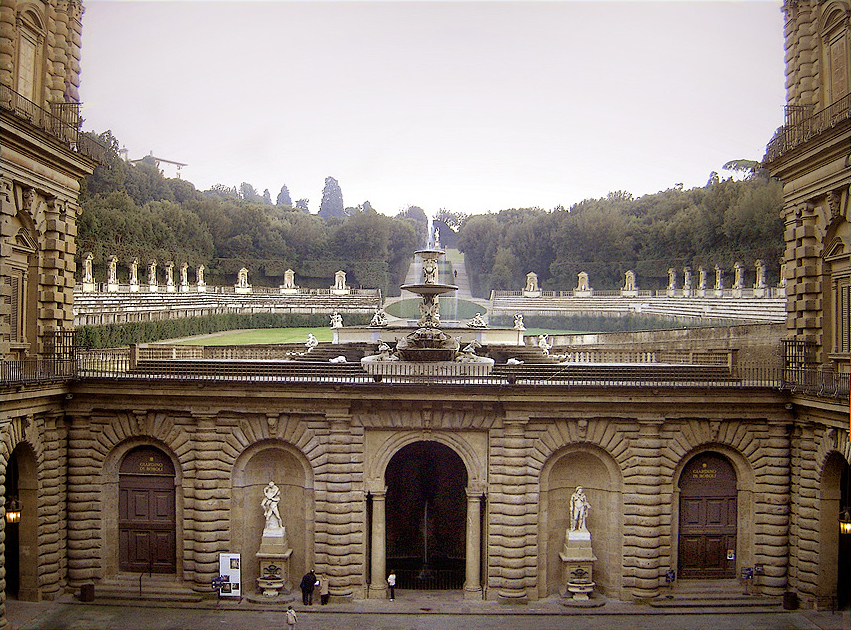

The Boboli Gardens, in Italian Giardino di Boboli, form a famous park in 
History and layout
The Gardens, behind the 
The 
The garden lacks a natural water source. To water the plants in the garden, a conduit was built from the nearby
The primary axis, centered on the rear facade of the palace, rises on Boboli Hill from a deep amphitheater that is reminiscent in its shape of one half of a classical hippodrome or racecourse. At the center of the amphitheater and rather dwarfed by its position is the Egyptian obelisk brought from the Villa Medici at 
The gardens have passed through several stages of enlargement and restructuring work. They were enlarged in the 17th century to their present extent of 45,000 meters² (11 acres). The Boboli Gardens have come to form an outdoor museum of garden sculpture that includes Roman antiquities as well as 16th and 17th century works.
In the first phase of building, the amphitheatre was excavated in the hillside behind the palace. Initially formed by clipped edges and greens, it was later formalized by rebuilding in stone decorated with statues based on Roman myths such as the Fountain of the Ocean sculpted by Giambologna, then transferred to another location within the same garden. The small Grotto of Madama, and the Large Grotto, were begun by Vasari and completed by Ammannati and Buontalenti between 1583 and 1593.
Despite the fact that it is currently undergoing restoration work, the Large Grotto's statues continue to be remarkable examples of Mannerist architecture and culture. Decorated internally and externally with stalactites and originally equipped with waterworks and luxuriant vegetation, the fountain is divided into three main sections. The first one was frescoed to create the illusion of a natural grotto, that is a natural refuge to allow shepherds to protect themselves from wild animals; it originally housed The Prisoners of Michelangelo (now replaced by copies), statues that were first intended for the tomb of the Pope Julius II. Other rooms in the Grotto contain Giambologna's famous Bathing Venus and an 18th-century group of Paris and Helen by Vincenzo de Rossi.


No comments:
Post a Comment